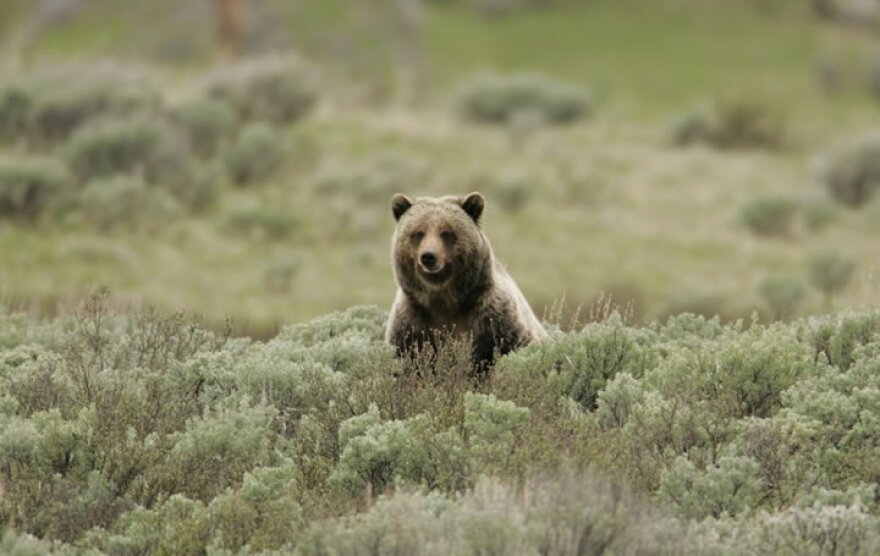The U.S. Fish and Wildlife Service Friday filed notice to appeal restored Endangered Species Act protections for Yellowstone-area grizzly bears granted by a federal judge in Missoula in September.
MTPR's Nick Mott reports on the government’s challenge to a decision that blocked the first hunts of the animal in decades.
Fish and Wildlife issued a rule delisting grizzlies in and around Yellowstone in the summer of 2017, claiming the population had recovered. Grizzlies today occupy about 2 percent of their historical range, but Yellowstone grizzlies have grown in number from an estimated 136 grizzlies when the species was listed in 1975 to more than 700 today.
Numerous conservation and tribal groups challenged the rule on a variety grounds. District Judge Dana Christensen assessed all arguments in a single hearing in late August, just days before grizzly hunts were scheduled to begin in Wyoming and Idaho. And in September, after nearly a month of restraining orders on the hunts, he sided with the plaintiffs.
Fish and Wildlife’s appeal doesn’t actually take the case to the 9th U.S. Circuit Court of Appeals in San Francisco. At least not yet. But it does buy the government some time.
"Sometimes the government files an appeal as a placeholder while they’re still trying to decide internally whether to appeal," says Andrea Santarsiere, senior attorney at the Center for Biological Diversity.
She says an eventual appeal would mean more resources spent on litigation – not recovery.
"Yellowstone’s beloved grizzly bears deserve more than that, and we’re prepared to fight vigorously to defend the court’s determination that grizzly bears still need federal protection."
The states of Wyoming and Idaho, along with four hunting advocacy organizations – including the National Rife Association - have also filed appeals as intervenors in the case.
The September federal court ruling said that Fish and Wildlife didn’t do enough analysis on the effect delisting would have on grizzlies in other ecosystems, connectivity between those ecosystems, and what a new method of counting bears could mean for population estimates.

Native American tribes also sued Fish and Wildlife over delisting, focusing on a lack of tribal consultation.
David Bearshield, chairman of an inter-tribal group that seeks to preserve grizzly protections called the GOAL Coalition, remembers the day of the ruling well.
"It was one of the most historic days, I believe, for the fight that we’ve been in."
More than 200 U.S. and Canadian tribes signed a treaty calling for continued Endangered Species Act protection for the grizzly.
"I’m hoping that the Department of Interior, the Fish and Wildlife Service, will understand that whenever they decide to do something, that they ensure that the tribes are sitting at the table," Bearshield says.
It’s the second time Fish and Wildlife has tried to delist Yellowstone-area bears, only to be thwarted by the courts.
That decision also derailed the agency’s plan to assess delisting for an even larger population of grizzlies in and around Glacier National Park by the end of the year.
Fish and Wildlife directed questions to the Department of Justice, who declined to comment.






